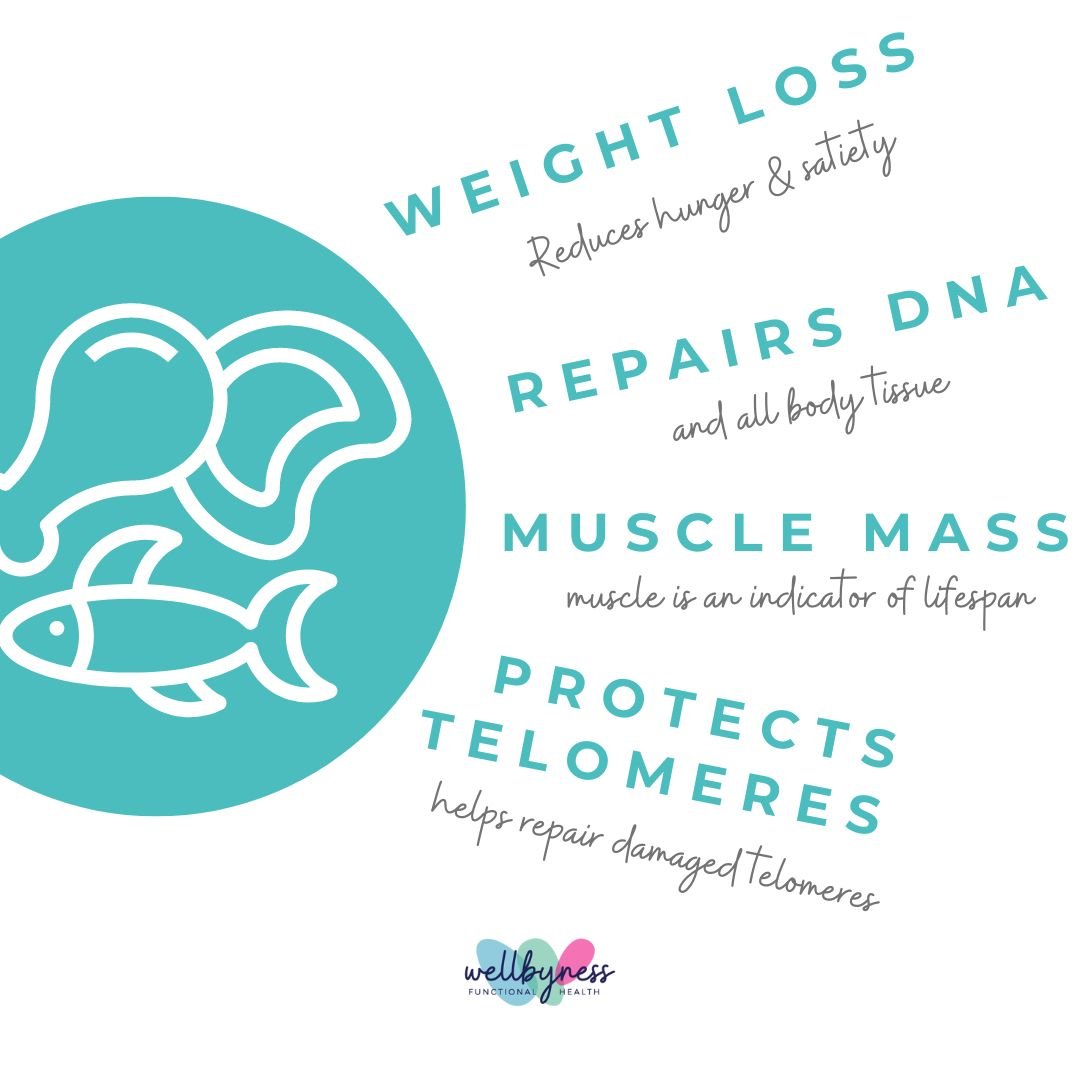PROTEIN, LONGEVITY & HEALTHSPAN
CAN PROTEIN HELP WITH LONGEVITY?
Proteins are the workhorses of the cell, performing various functions. One is to protect DNA from damage, another is the role of muscle in determining lifespan and healthspan as metabolically-healthy active tissue. Get enough protein and longevity can be a lever to increase your LongevityPotential™.
DNA
DNA is constantly under attack from various sources, both inside and outside the cell.
These include UV radiation, chemicals, and other triggers that can cause changes in the DNA structure. These changes can lead to unwanted genetic mutations. Proteins help to protect DNA by binding to it and forming a protective barrier. This barrier prevents damage from reaching the DNA and helps to repair any damage that does occur.
TELOMERES
Another way protein can help, is with Telomeres, the protective caps at the end of chromosomes. Telomeres help to prevent DNA damage and keep chromosomes from sticking to each other. Telomeres get shorter as we age, which is what is thought to be one of the major contributing factors to the ageing process. Proteins play a vital role in protecting telomeres from damage. They bind to telomeres and help to keep them from getting shorter, and can also help repair any damage that does occur to telomeres. This helps to keep our cells healthy and prevents the onset of age-related diseases.
MUSCLE
Possibly it seems obvious that protein is an essential macronutrient for building muscle mass and strength, plus repair and maintenance of existing muscle tissue. Therefore, adequate protein intake is critical for maintaining muscle mass and function with age. There are many different types of protein, but they all contain amino acids, which are the building blocks of muscle tissue. When you consume protein, your body breaks it down into amino acids, which are then used to rebuild muscle tissue. The process of breaking down and rebuilding muscle tissue is known as muscle protein turnover.
Muscle protein turnover declines with age, which leads to muscle loss (sarcopenia). This age-related loss of muscle mass and function can be accelerated by a lack of protein in the diet. In fact, protein intake is one of the most important dietary factors for preserving muscle mass and function with age. The recommended dietary allowance (RDA) for protein is at least 0.8g/kg of bodyweight. This amount is sufficient to maintain muscle mass in most people. However, it seems as we age, even more protein to maintain muscle mass and function is considered optimal. And, if you are athletic, you could be needed as high as 1.6 - 1.8g/kg.
There are many different sources of protein, including animal-based foods such as meat, poultry, fish, and dairy, as well as plant-based foods such as beans, legumes, and nuts. Animal-based proteins tend to be the most complete, meaning they contain all of the essential amino acids your body needs to rebuild muscle tissue. Plant-based proteins are typically lower in one or more of the essential amino acids, but they can still be useful.
HOW MUCH IS ENOUGH?
Calculating your requirements is easy: Take your body weight in kg, and multiply it by the factor based on your activity level.
If you are moderately active, by 1.4, highly active by 1.6 and if you are doing heavy strength work, weights or are actively recovering from illness or on a weight loss program, you can go as high as 1.8 - 2.0g.
The total is how much protein you need per day. You then need to determine how to split that protein total across your meals, keeping mind a 125g portion of “protein” does not equal 125g of protein.
eg: for myself, a 46yr with occasional strength training in peri-menopause: 62kg x 1.6g = 99.2g a day.
HOW MUCH PROTEIN IS IN MY FOOD?
In a 125g portion, which is considered “average”, you will get the following amount of protein:
Chicken: 39g
Steak: 31g
Cheddar Cheese: 31g
Salmon: 25g
Minced Meat: 24g
Greek Yoghurt: 13g
Lentils: 11g
_____________
1 egg: 6g
1 egg white: 4g
REMINDER:
It’s always good to choose organic, grass-fed or health-based protein options to ensure you get the best quality protein.
LAST TOP TIP!
I’ll leave you with the last tip around protein: ALWAYS aim for 30g of protein per meal, as research shows 30g of protein can reduce hunger and cravings!
Ref: PMC6179508, Nutrition protein values are average and calculated using the USDA Data.



